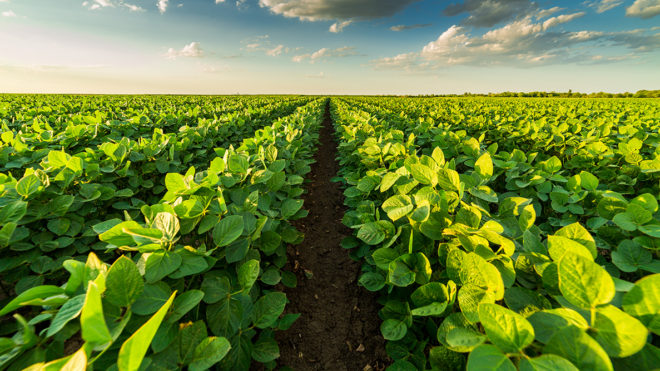As we dive into a new decade, I sat down with Craig Hurley, soybean lead for the Beck’s product team. His unique vantage point allows his to evaluate new technologies from across the industry well before they are commercially available.
QUICK RECAP: What was the most meaningful change to soybean technology in the ’10s?
Late in the decade, there was a shift from glyphosate (Roundup®) and glufosinate (Liberty®) single mode of action soybeans to multiple mode of action-based systems that include tolerance to both glyphosate and glufosinate within the same soybean. In addition, soybean breeding efforts became more refined and genetic gains year-over-year continued to build.
What is the tone for the early ’20s – the next two to three years?
There is exciting, near-term technology in the from of XtendFlex®, which is anticipated to have a wide commercial launch in 2021. This will be the next generation of multiple mode of action soybeans, adding Liberty tolerance to the Roundup and dicamba tolerance we see in Roundup Ready 2 Xtend®. In Central and South American, there is incredibly high insect pressure on soybeans, so insect traits that we may think of in corn will enter the soybean market in the next few years.
What won’t be changing in the ’20s?
Weeds aren’t slowing down any time soon, and we cannot let our foot off the gas on weed control. It will continue to be imperative that farmers rotate chemistries and use muliple modes of action in every pass. Farmers should consider rotating trait platforms in some geographies. Layering residuals will continue to be crucial to a successful weed control program regardless of post herbicide options.
The other thing that won’t change is the additional multiple mode of action technologies in the pipeline. These will generally build up what is currently available by adding more specific herbicide tolerances such as PPO tolerance.
How will farmers know what technology is right for them in the coming decade?
The opportunity will truly come down to each farm and perhaps each field, based on a few factors. Some of the factors are: what is the weed spectrum, will they be spraying their own herbicides, what regulations may impact the use of certain technologies, and do they need to rotate systems? The answers to these questions will ultimately help guide the technology decision as they evaluate the available technologies.
Looking long-term, in the first issue of CropTalk in the year 2030, what might soybean technology look like?
A technology you may have heard about on the horizon is RNAi. RNAi is a completely new technology, and they are still defining the regulatory framework. RNAi works by turning off genes that are naturally occurring in the plant. This has the potential to deploy defense genes on demand. Imagine “turning on” drought tolerance just when you need it or at least making the plant less desirable for insect pests or limiting the spread of disease within the plant.
Some folks think that ten years from now we will be in a post-herbicide (not post-emergence herbicide; literally, post-herbicide) era. With the advent of RNAi and improvements in robotic weed control, there is potential for a future without herbicides.
Beck’s business model is to help farmers succeed by remaining family-owned and independent and securing access to leading technology. Ten years from now, our entire technological landscape may be very different from 2019, but our business model will remain the same.
~Samantha Miller – Agronomy Information Specialist

